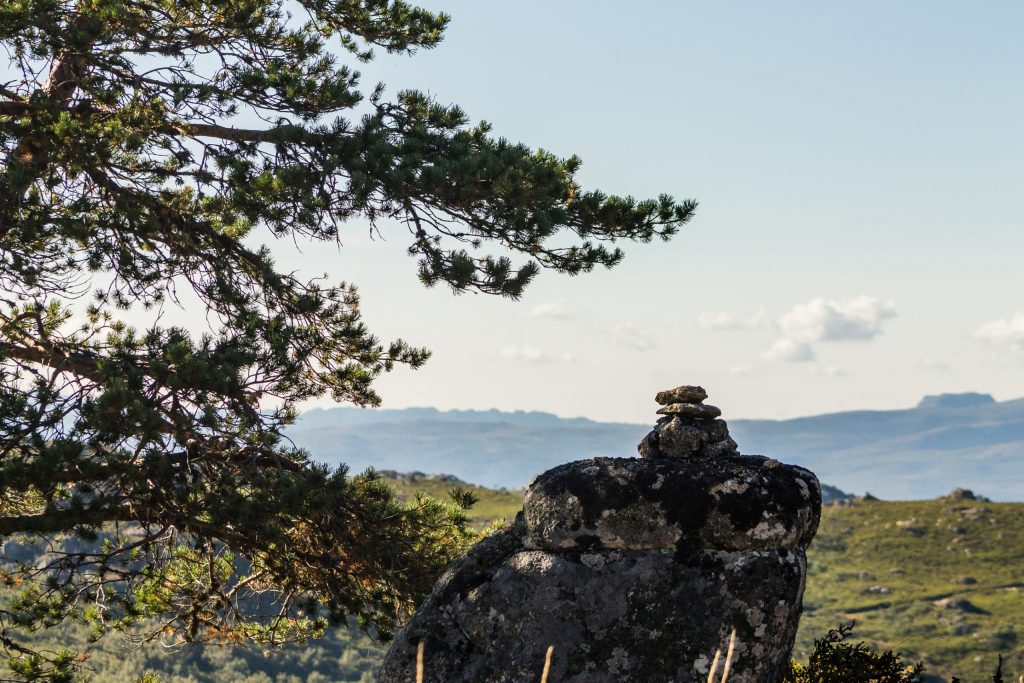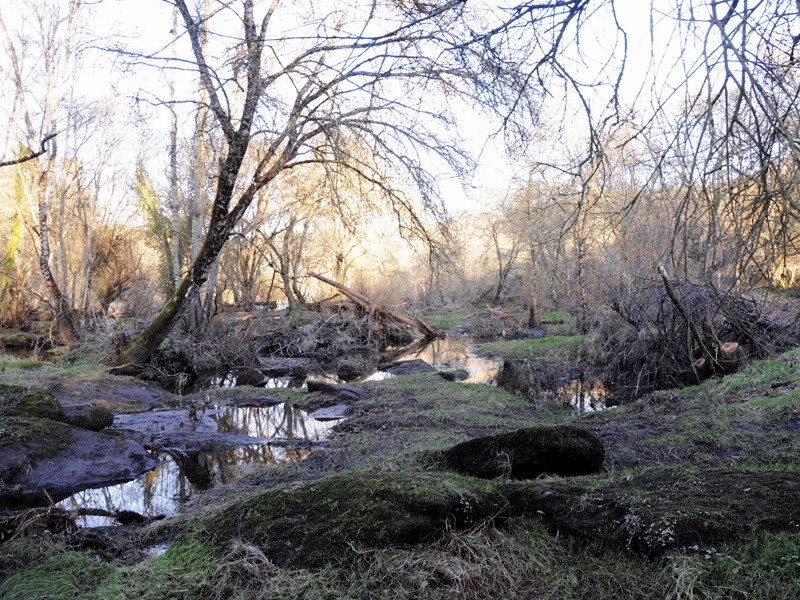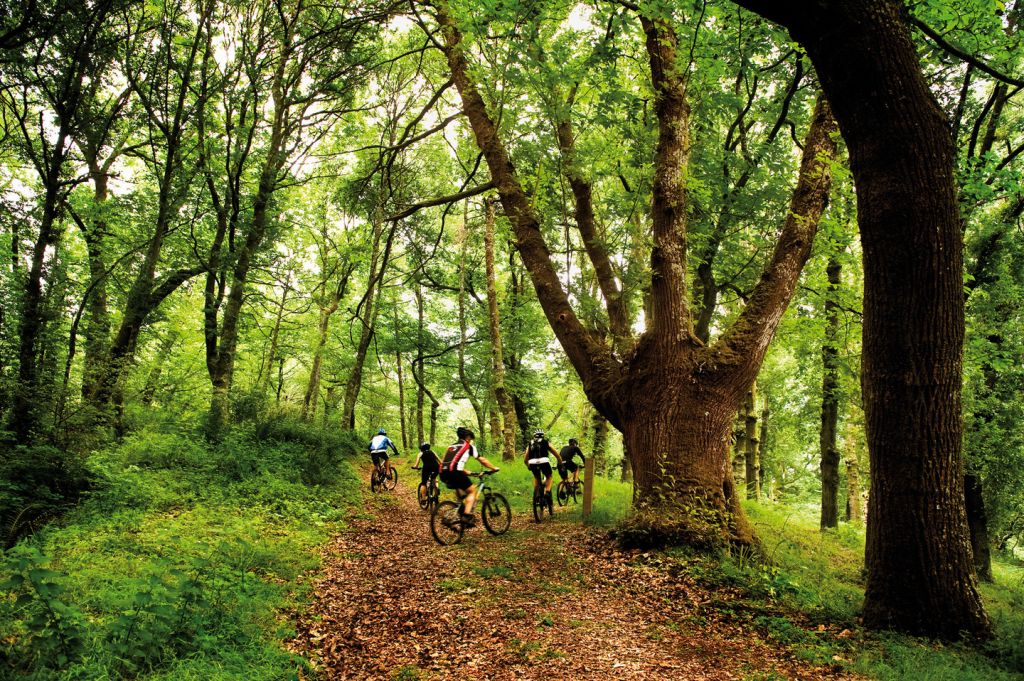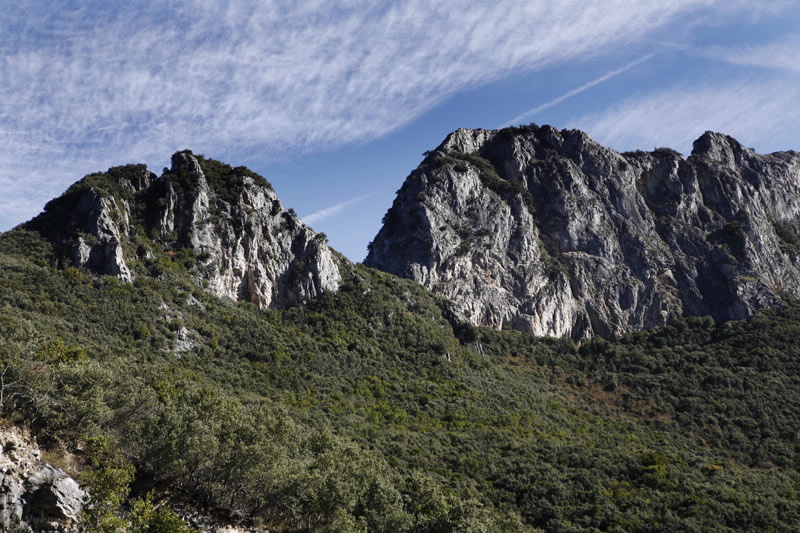Galicia is sea and mountains. The blue of the water that bathes its coasts is captivating, but the green of the mountains that draw its landscape is, simply, unique. The beauty of the forests of Galicia falls in love with anyone who is lucky enough to enter them.
Today, March 21, on the occasion of the celebration of the International Day of Forests, we want to take a walk through some of the most fascinating mountains in Galicia. You sign up? On our route we will visit six of these green beauties of nature.
Fragas do Eume (A Coruña)
It is one of the best known natural parks in Galicia. Located very close to Pontedeume (A Coruña), the Fragas do Eume are one of the most important protected natural areas in Galicia, with their more than 9,000 hectares on the banks of the river Eume.
They are considered as one of the best examples of Atlantic forest from all over Europe. It stands out for its vegetation in which we find horse, chestnut or birch trees; and its fauna, also very varied, is made up of the goshawk, the owl, the hawk … to mammals such as the otter, the roe deer, the deer or the fox.
It is highly recommended do any of the hiking trails on foot which take us into these wonderful Fragas do Eume.
Serra do Xurés (Ourense)
 –
–Its more than 30,000 hectares place the Xurés Natural Park as one of the largest in Galicia. Located in Baixa Limia, between the border with neighboring Portugal, it is a beautiful place that hides a rich cultural and ethnographic heritage. And it is that more than 2000 years ago, an important communication route crossed these forests. It was about the Via Nova, which still has its milestones, built by the Romans to unite Astorga and Braga.
The green of its mountains blends with the blue of its waterfalls. Without a doubt, a landscape that deserves be toured on foot so as not to miss any detail of its splendid beauty.
Waterfall Forest (Lugo)
 –
–
The centenary waterfall forest It is an autochthonous forest that the river floods periodically, which allows you to enjoy a unique landscape: the lagoons that make up the river’s water reflect the shade of centuries-old oaks.
The waterfall forest is located in the upper course of the river Miño, just 15 kilometers from Lugo, and is part of the Terras do Miño Biosphere Reserve.
Its good state of conservation allows it to be one of the most important flood forests remaining in Spain.
Colón Forest (Pontevedra)
 –
–In Poio (Pontevedra) we meet the Colón forest, considered one of the largest redwood forests in all of Europe. The more than 2 hectares of land on which they rise 450 specimens of this species they do not go unnoticed.
This forest save a story, and its specimens of redwoods are a gift that, in 1992, the United States government made to the municipality of Pontevedra to commemorate the five hundredth anniversary of the discovery of America.
Fraga de Catasós (Pontevedra)
 –
–
On the outskirts of Lalín (Pontevedra) there are hundred-year-old oaks and chestnut trees. East centennial forest, considered a Natural Monument, boasts some specimens that exceed 30 meters in height. They are considered the best specimens of centenary chestnut trees in Europe. They were planted in the early 19th century on the property of the Quiroga family’s pazo, related to Doña Emilia Pardo Bazán who spent time in this house.
Although it is a small forest, it offers several hiking trails that are perfect for families.
Serra da Enciña da Lastra
 –
–
In the Valdeorras region, east of Ourense, and acting as a natural border with neighboring Castilla y León is the Serra da Enciña da Lastra Natural Park. It is an extraordinary natural space for its special Mediterranean type climate, its limestone soils and the prominence of a tree with its own history, the oak.
People say that the park takes its name from the abundance of holm oaks, but also due to the existence of an ancient specimen of enormous dimensions that once served as a guide to travelers who traveled its roads.
In addition to having a peculiar vegetation, Enciña da Lastra also inhabits a very atypical fauna. The park can be easily covered by car, but it is also possible to do several routes on foot, among which the Route through the Sil Valley that part of Vilardesilva and the Route to the Hermitage of Santo Estevo, which part of the Pardollán rest area.


